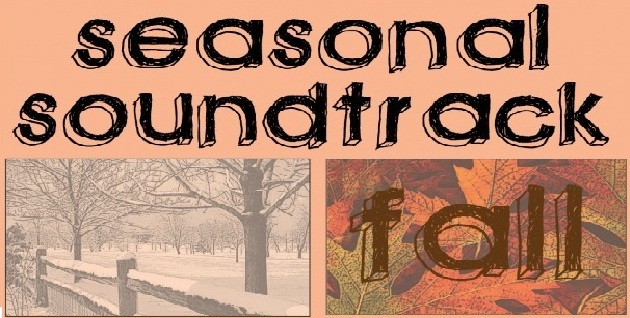
As the seasons change, so do our listening habits. In much the same way we stuff our summer clothes to the back of our closets come winter, the shift in temperatures and scenery prompts us to dig up old favorites at specific points throughout the year. Autumn, a season where the leaves begin to crackle and the heat of summer gives way to breeze and chill, is no exception. At One Thirty BPM, we’ve already begun plucking old fall favorites from our collections. This is our seasonal soundtrack.

Animal Collective
Feels
[FatCat; 2005]
Throughout my childhood, fall didn’t really exist. Growing up in Florida, the sticky summer just transitioned very slowly to the crisp mornings of winter. Leaves didn’t change, and the static nature of summer afternoons just carried through until late November finally brought relief. Feels reminds me of those days, sitting out in the heat of late October, and sweating profusely, wishing desperately that I was elsewhere. There’s just something about the drumming more than anything that conveys that insistence that I’d have been better off anywhere but on that front porch.
– Colin Joyce
Recommended listening:
“Banshee Beat”
“The Purple Bottle”

Asobi Seksu
Citrus
[Friendly Fire Recordings; 2006]
Once the summer comes to a close, the cooling temperature progresses from comfortable to freezing, leaves change into an array of picture perfect colors before rotting in the dirt, sunsets are viewed from the office rather than at home or the beach, and that summer romance has been replaced with a fall fling. Fall is the most bittersweet of seasons, or rather, citrusy sweet. On their 2006 sophomore album Citrus, Asobi Seksu conjures waves of guitar noise that harken back to the glory days of shoegaze, but electrifies them with a refreshing dose of buoyant pop hooks. The combination of Yuki Chikudate’s dulcet vocal melodies that soar and coo in English and Japanese and James Hanna’s effect-laden guitar swirl makes for a superbly crafted collection of exuberant dream pop with an inescapably wistful undercurrent.
– Frank Mojica
Recommended Listening:
“Thursday”
“Strawberries”
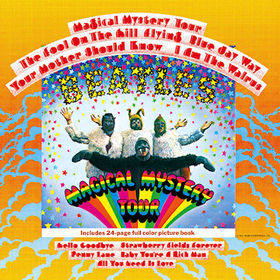
The Beatles
Magical Mystery Tour
[Parlophone; 1967]
The Beatles were a rarity: one of the few rock-bands that managed to experiment with unconventional music-making techniques while nevertheless retaining their worldwide popularity. Starting with Rubber Soul and furthermore elevated by Revolver, their creativity reached an all-time peak with The Magical Mystery Tour — a contemporary soundtrack for an hour-long, British television film. While many would argue that Sgt. Pepper’s Lonely Hearts Club Band was The Beatles’ most innovative work (if not by any band ever), it was The Magical Mystery Tour that solidified the group as totally weird, as they ditched the traditional set-up of “guitar and bass” for a more orchestral and instrumental approach.
The Magical Mystery Tour reminds me of Fall because of the lush landscapes it depicts. With “The Fool on the Hill,” McCartney sings about an isolated individual living on a broad, expansive terrain. His implementation of woodwinds complements the narrative perfectly– illustrating an image of grand scenery with the juxtaposition of desolated isolation. The same can be said about “Strawberry Fields Forever” or “Penny Lane”– songs that more or less paint the “lyrics” for us in a rich, musical manner.
– Ryan Studer
Recommended Listening:
“The Fool On The Hill”
“Strawberry Fields Forever”
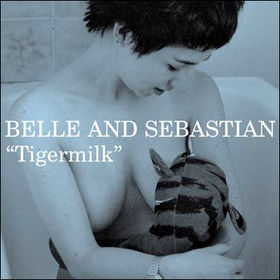
Belle and Sebastian
Tigermilk
[Electric Honey; 1996]
From the unassuming guitar balladry that opens “The State I Am In” to the tea-and-sympathy flute folk of “Mary Jo,” Tigermilk is wistful, organic, and pretty, much like the decaying spectrum of ocher and earthen hues that seize New England trees come autumn. Back in 1996, when he was still just another lad at vocational school, Stuart Murdoch needed this diaphanous escape; indeed, Tigermilk as a whole balances itself between the boundless pleasures of dreams and the mundane, often maddening necessitudes of daily life. “I was puzzled by a dream that stayed with me all day in 1995,” Murdoch explains on “The State I Am In.” Meanwhile, on the surely autobiographical “Expectations,” he laments the department store drudgery that looms over his future; you see, “For careers, you say you want to be remembered for your art.” On the aptly named “I Could Be Dreaming,” Murdoch questions his protagonist: “If you had such a dream, would you stand up and do the things you believe in?” By closer “Mary Jo,” we still get no respite from his subconscious’s existential crisis: “Life is never dull in your dreams; a pity that it never seems to work the way you see it,” he sings as the aforementioned flute belies his inner disappointment. The true achievement of Tigermilk isn’t just that it so perfectly nails these universal feelings of adolescent anxiety and inadequacy; no, what makes this a classic is that for all its depression, you just want to listen to it again and again. Each listen further reinforces both its familiar charm and subtle elegance, much like a certain season I know.
– Joshua Becker
Recommended Listening:
“Expectations”
“My Wandering Days Are Over”
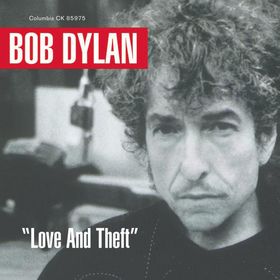
Bob Dylan
“Love and Theft”
[Columbia; 2001]
I must confess that I cheated a bit in choosing albums to write for this feature. You see, in Minnesota, where I grew up, we didn’t experience “fall” in the way most people do. Instead, there was a period of time late in the year where it was suddenly too cold to go swimming but not cold enough to go sledding. The extreme weather we had in the summer and winter made fall and spring seem not like seasons, but transitions. Fall was the time where we lamented the end of summer and braced for the winter ahead, and “Love and Theft” is the record with which I most enjoy seeing the summer out. In particular, “Summer Days” finds fellow Minnesotan Dylan in denial about the season’s festivities coming to an end. “I know a place where there’s still something going on,” he growls in his signature sandpaper voice. The instruments on “Floater” conjure up images of a lazy summer day when “leaves begin to stir.” It is this kind of transitional late summer/early fall day that “Love and Theft” encapsulates so well.
There are those who would prefer that summer continue forever, and Dylan can relate: “Sometimes somebody wants you to give something up,” he sings, “and, tears or not, it’s too much to ask.” Though it may not be entirely too much to ask for summer to end, it is that fervent love and fond remembrance of the warm season that “Love and Theft” evokes so clearly, and that is what makes it so great for the autumn.
– Harrison Suits Baer
Recommended Listening
“Mississippi”
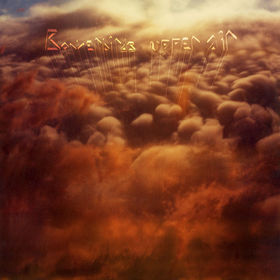
Bowerbirds
Upper Air
[Dead Oceans; 2009]
Bowerbirds’ second full-length album, Upper Air, drips with the changing of seasons: falling leaves, tire swings gently brushing the edge of a creek, carved initials on tree stumps. There is a nostalgia and a romance to autumn that folks in certain parts of America, like Bowerbirds’ home of North Carolina, experience more vividly than, say, we in Los Angeles. But Upper Air provides a direct glimpse into all the emotion and memories that this seasonal change can evoke: the galloping conclusion of “Silver Clouds” is a horseback ride on an empty beach, “Northern Lights” is a first held hand quickly blossoming into love, “Teeth” is a candle’s light in the dusk. Yes, Upper Air is an evocative album, a sensual album, a tremendously listenable album built on astonishment and beauty – it is everything the fall is, put on record; one last bit of warmth to keep us comfort through the winter.
– Philip Cosores
Recommended Listening
“Chimes”
“Northern Lights”

Braids
Native Speaker
[Kanine Records; 2011]
Even though Braids’ debut full-length was released this past January, the overall feel of Native Speaker isn’t apropos with the cold and desolate characteristics that comprise winter. It’s quite the opposite actually. With sounds that derive from psychedelic rock to post-rock, Native Speaker is an album that’s filled with layers-upon-layers of lush textures, ethereal harmonies, and blissful melodies that provide the listener with a type of warmth found only during the fall. It’s also an album where lovers can frolic around to while laying on a bed of grass as frontwoman Raphaelle Standell-Preston sings the erotic lyrics with a sense of delicacy. Fall is a season where watching leaves fall from trees becomes a beautiful sight and sitting at home on a weekend is the ideal thing to do. Either way, feeling comfortable is the goal. And Native Speaker is just that – a comfortable album.
– Ace Ubas
Recommended Listening:
“Lemonade”
“Plath Heart”

Bright Eyes
Fevers & Mirrors
[Saddle Creek; 2000]
For many of us, it’s still hard to stop thinking of autumn as the back to school season. And what’s school without hormone imbalances and social crises? Listening to the Bright Eyes mainstay Fevers & Mirrors always brings back those indulgences into primal, romanticized, and youthful emotion. It was a time when Conor Oberst could make simple jealousy sound like the edge of catastrophe, or a cheating lover feel like the end of all things. The album is almost uniformly bleak, touching on all the hits from death to heartbreak to hopelessness. Autumn’s back to school tradition may not need be so dark, but it can be worthwhile to remember when youthful emotions were so vicious and unashamed.
– Justin Pansacola
Recommended Listening:
“The Calendar Hung Itself”
“Something Vague”

Cass McCombs
Catacombs
[Domino; 2009]
Catacombs is a warm album, but not in the rousing, energetic way that would be more fitting for spring or summer. It’s the type of music you’d like to wake up to on a late afternoon, with its mid-tempo country sway and deeply hypnotic melodies. If we consider fall to be the beautiful and mellow season, you would find it in the artfully restrained music and contentedness of Catacombs. “You Saved My Life,” is a grateful love song, where the earnestness can be felt in lines like, “Darling now I must live for you, one reprieve grants another until each world is born anew.” Then there’s “The Executioner’s Song,” which would be purely an expression of profound satisfaction were it not for the title and music video. These are themes that are not commonly done well, but McCombs makes it easy to dive in. As you wait for the winter, this album will help you slow down, dig deep, and cherish.
– Justin Pansacola
Recommended Listening:
“You Saved My Life”
“The Executioner’s Song”
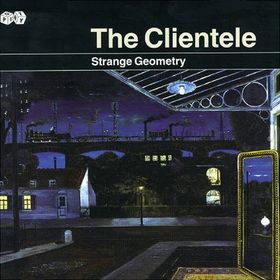
The Clientele
Strange Geometry
[Merge Records; 2005]
Autumn is the season of things coming to an end; leaves fall off the trees, the days get shorter, and we begin the approach to the end of the year. Endings are very much the base of Strange Geometry; the ends of relationships, the ends of periods of your life, or merely the end of summer – and throughout, singer Alasdair MacLean seems desperate to turn back. “Everything in my life felt like it was coming to a mysterious close; I could hardly walk to the end of the street without feeling there was no way to go except back,” Alasdair MacLean divulges on “Losing Haringey” – more a spoken story set to crisp guitars than an orthodox song.
Throughout Strange Geometry the music conjures several autumnal images. MacLean’s guitar shimmers like sunlight under a canopy turned golden through the filter of oranged leaves; the violin melodies seem to soundtrack the graceful falling of leaves from the trees, particularly on the Beatles-esque “(I Can’t Seem To) Make You Mine”; the whole sound of Strange Geometry is designed for reflection.
In London, where both I and The Clientele come from, autumn can seem perennially dark and wet – more of a pre-winter than a season in itself. And for me, nothing on Strange Geometry sums this up better, both literally and metaphorically, than the simplistic “the rain has brought the night, and the night has brought the rain.”
– Rob Hakimian
Recommended Listening:
“Since K Got Over Me”
“E.M.P.T.Y.”
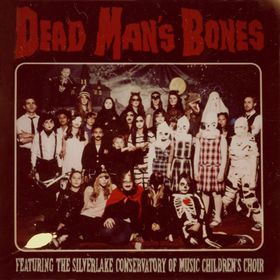
Dead Man’s Bones
Dead Man’s Bones
[Anti-; 2008]
While Dead Man’s Bones isn’t a definitively Halloween-themed record, it’s certainly the next best thing. When Ryan Gosling and Zach Shields first started making music together, they did so with a mutual admiration of ghosts in mind. Their debut record is ripe with love stories starring apparitions and monsters and backed by an equally haunting soundtrack. The pair enlisted the help of a children’s choir and heavily sanctioned their own recording process, limiting the number of takes and excluding outside instrumentalists. As a result, Dead Man’s Bones feels crunchy and organic. There are a lot of imperfections in the songs, adding all the more to the spooky, uneasy aesthetic.
The album was initially released in October 2009 and subsequent shows featured Gosling and Shields in full costume. Even the album’s cover follows a similar protocol: the Silverlake Conservatory Children’s Choir appear in full costume while Gosling and Shields flank them on either side in plainclothes, their stern, upright demeanor almost cult-like in nature. It’s a most appropriate image to an album perfectly befitting an eerie time of year.
– Andrew Bailey
Recommended Listening:
“Pa Pa Power”
“My Body’s A Zombie For You”

Demdike Stare
Tryptych
[Modern Love; 2010]
Tryptych is a compilation of Demdike Stare’s three 2010 vinyl releases with an album’s worth of new material thrown in — you know, just to pad things out. The CD-only release is two hours and 40 minutes of nightmarish kick drum-throbbing ambient tech. If Gas was obsessed with Ouija boards, Lynchian dreamscapes, fifteenth century witches, and free jazz you’d get something similar to Demdike Stare, except add a bit of doom heaviness to the cauldron of black drones. Throw this on in a pitch black basement and tell some ghost stories.
– Will Ryan
“Library of Solomon Book 2”
“Regolith”

Jaga Jazzist
What We Must
[Ninja Tune; 2005]
Jaga Jazzist is a massively underappreciated experimental group out of Norway, and this album, What We Must, needs to be heard. Jaga started as a drum-and-bass group, but in 2005, they used What We Must to shift toward post-rock and experimental jazz, adding a full-time drummer and layers upon layers of dramatic instrumentation. With its tendency toward crescendos and slow-burning subtlety, this album was practically designed to accompany the awe-inspiring glories of nature that occur every autumn, such as chlorophyll draining from leaves, or birds flying south. Better yet, Jaga presents us with a more Scandinavian take on colder worlds–the opening track, “All I Know Is Tonight,” is a sweeping, multiple guitar-driven track that sounds the way the frigid landscape of Norway must look. I swear to the Norse gods that if you give What We Must a chance, you will be rewarded with one of most epic albums you’ll hear this season.
– Arika Dean
Recommended Listening:
“All I Know Is Tonight”
“Swedenborgske Rom”

Kate Bush
Aerial
(Disc 2)
[Sony; 2005]
The first disc of Kate Bush’s Aerial is a solid set of smart, textured, jazzy pop. But it’s the album’s second half, an extended suite called “A Sky of Honey,” that I find myself coming back to, especially this time of year. The sparse instrumentation is used to push moods over hooks, although there’s plenty of the latter if you spend enough time with it. “Somewhere In Between,” “Sunset,” and “Nocturn” are as tuneful as anything in Bush’s formidable catalog, but they’re neither overtly poppy nor insular. They occupy the same gray area that autumn does between summer and winter, and it’s a sound that perfectly suits the lyrical theme of changing seasons.
– Sean Highkin
Recommended Listening:
“Sunset”
“Somewhere In Between”

